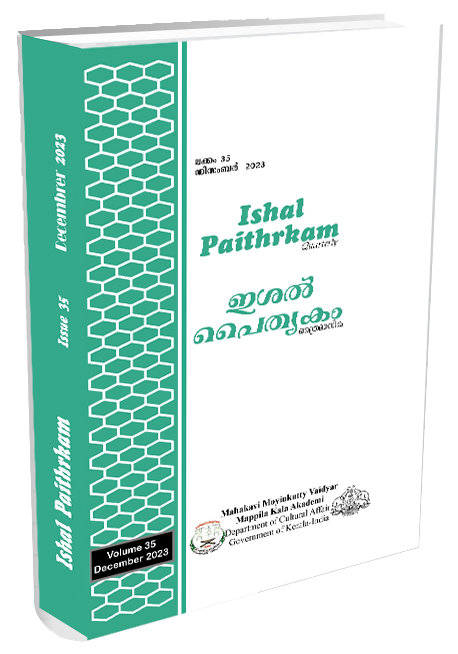Agony of Child Brides : Stance of the Women Reformers
Keywords:
Child bride, representation, self, other, subalternAbstract
Nineteenth century played a significant role in the transformation of women in particular in the larger context of gender restructuring under colonialism. Many aspects of subalternity of ‘the second sex’ were addressed by the society ignited by the presence and intervention of the ‘Progressive –white-masculine’ British. Though women and women reformers were treated as ‘other’ in the midst of their own ‘brownmen’ and the dominant ‘whitemen’, a reading through the lines of the autobiographical accounts of the women reformers echoes the voice of dissent and agony that they had experienced being child brides. Being subaltern, they were given only the chance to be represented in the discourse of ‘women’s question’. Men, both Indian and British debated and took decision on behalf of women ; but the first-hand experience of being child brides places their voice something above representation. It expresses their ‘selves’ and the mere rhetoric of male reformers on behalf of child brides were endorsed often by the personal experience of women reformers. The paper examines the experiences of child brides and how these experiences make the stance of the women reformers on the issue unique and different from male reformers.
Downloads
References
Sudhir Chandra: Enslaved Daughters. Colonialism, Law and Women’s Rights (New Delhi: OUP, 1998) 2 13.
Geraldine Forbs and Tapan Raychaudhauri, The Memoirs of Dr.Haimabati Sen (New Delhi: Roli Books. 2000) 70
Meera Kosambi, ed., Pandita Ramabai Through Her Own Words (New Delhi: OUP: 2000) p.70
Monica Felton, A Child Widow’s Story (London: Victor Gollancz Limited, 1966) 26.
Parvati Athavale, Hindu Widow (an autobiography). Trans. Rev.Justin.E.Abbott (New Delhi: Reliance Publishing House, 1986) 12.
Ramabai Ranade. Ranade. His Wife’s Reminiscences, Trans. Kusumavati Deshpande (New Delhi: Publications Division, 1963) 3 5.
Geraldine Forbs & Thapan Ray Chaudhuri, Memoires of Dr. Haimabati Sen (New Delhi: Roli Books, 2000) 92.
Meera Kosmabi, ed., Pandita Ramabai Through Her Own Words (New Delhi: OUP, 2000)113. 56
E. F. Chapman, Notable Indian Women of the 19'” Century (London: W.H. Allen and Company Limited. 189 1) 62.
Bodley L. Rachel, ‘Introduction’ The High Caste Hindu Woman by Pandita Ramabai Saraswathi (Philadelphia, 1888) iii.
Downloads
Published
Issue
Section
License
Copyright (c) 2025 ISHAL PAITHRKAM

This work is licensed under a Creative Commons Attribution-NoDerivatives 4.0 International License.

